Factors affecting inductance
There are four basic factors of inductor
construction determining the amount of inductance created.
These factors all dictate inductance by affecting how much
magnetic field flux will develop for a given amount of
magnetic field force (current through the inductor's wire
coil):
NUMBER OF WIRE WRAPS, OR "TURNS" IN THE
COIL: All other factors being equal, a greater number of
turns of wire in the coil results in greater inductance;
fewer turns of wire in the coil results in less inductance.
Explanation: More turns of wire means
that the coil will generate a greater amount of magnetic
field force (measured in amp-turns!), for a given amount of
coil current.

COIL AREA: All other factors being
equal, greater coil area (as measured looking lengthwise
through the coil, at the cross-section of the core) results
in greater inductance; less coil area results in less
inductance.
Explanation: Greater coil area
presents less opposition to the formation of magnetic field
flux, for a given amount of field force (amp-turns).

COIL LENGTH: All other factors being
equal, the longer the coil's length, the less inductance;
the shorter the coil's length, the greater the inductance.
Explanation: A longer path for the
magnetic field flux to take results in more opposition to
the formation of that flux for any given amount of field
force (amp-turns).
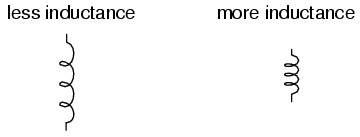
CORE MATERIAL: All other factors
being equal, the greater the magnetic permeability of the
core which the coil is wrapped around, the greater the
inductance; the less the permeability of the core, the less
the inductance.
Explanation: A core material with
greater magnetic permeability results in greater magnetic
field flux for any given amount of field force (amp-turns).
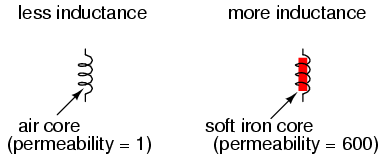
An approximation of inductance for any coil
of wire can be found with this formula:

It must be understood that this formula
yields approximate figures only. One reason for this
is the fact that permeability changes as the field intensity
varies (remember the nonlinear "B/H" curves for different
materials). Obviously, if permeability (�) in the equation
is unstable, then the inductance (L) will also be unstable
to some degree as the current through the coil changes in
magnitude. If the hysteresis of the core material is
significant, this will also have strange effects on the
inductance of the coil. Inductor designers try to minimize
these effects by designing the core in such a way that its
flux density never approaches saturation levels, and so the
inductor operates in a more linear portion of the B/H curve.
If an inductor is designed so that any one
of these factors may be varied at will, its inductance will
correspondingly vary. Variable inductors are usually made by
providing a way to vary the number of wire turns in use at
any given time, or by varying the core material (a sliding
core that can be moved in and out of the coil). An example
of the former design is shown in this photograph:
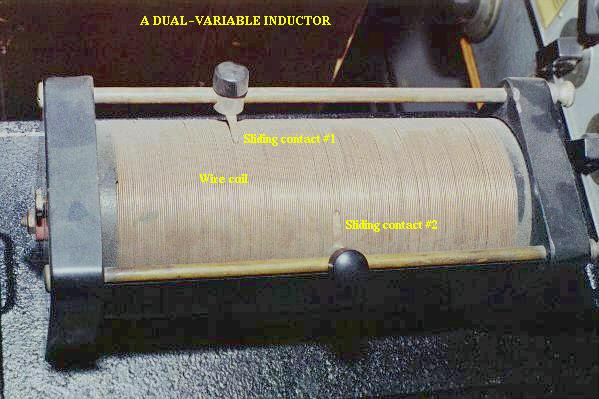
This unit uses sliding copper contacts to
tap into the coil at different points along its length. The
unit shown happens to be an air-core inductor used in early
radio work.
A fixed-value inductor is shown in the next
photograph, another antique air-core unit built for radios.
The connection terminals can be seen at the bottom, as well
as the few turns of relatively thick wire:
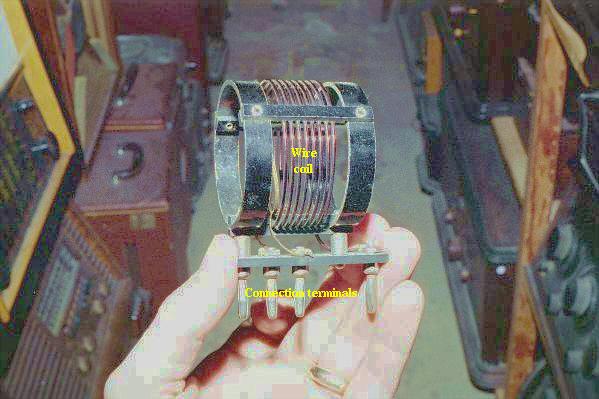
Here is another inductor (of greater
inductance value), also intended for radio applications. Its
wire coil is wound around a white ceramic tube for greater
rigidity:
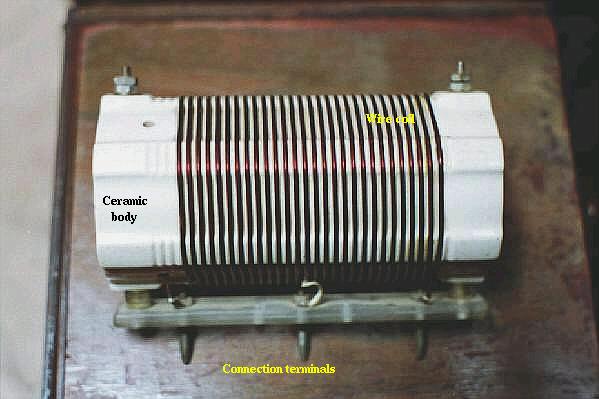
Inductors can also be made very small for
printed circuit board applications. Closely examine the
following photograph and see if you can identify two
inductors near each other:
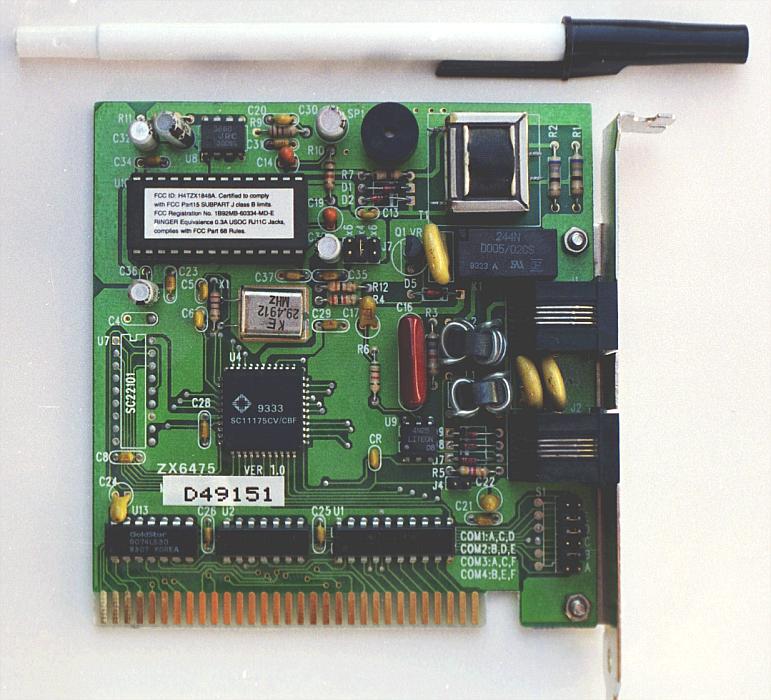
The two inductors on this circuit board are
labeled L1 and L2, and they are
located to the right-center of the board. Two nearby
components are R3 (a resistor) and C16
(a capacitor). These inductors are called "toroidal" because
their wire coils are wound around donut-shaped ("torus")
cores.
Like resistors and capacitors, inductors can
be packaged as "surface mount devices" as well. The
following photograph shows just how small an inductor can be
when packaged as such:
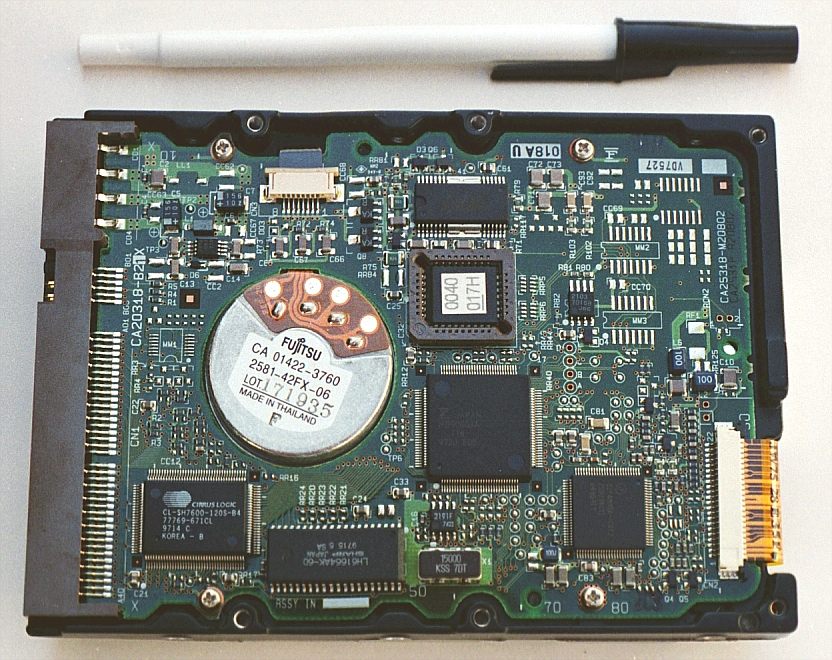
A pair of inductors can be seen on this
circuit board, to the right and center, appearing as small
black chips with the number "100" printed on both. The upper
inductor's label can be seen printed on the green circuit
board as L5. Of course these inductors are very
small in inductance value, but it demonstrates just how tiny
they can be manufactured to meet certain circuit design
needs. |